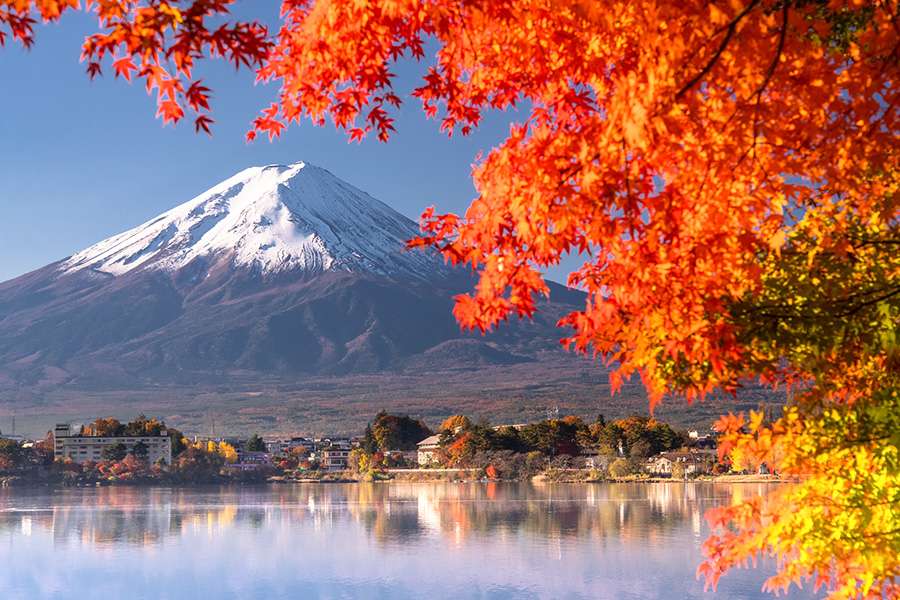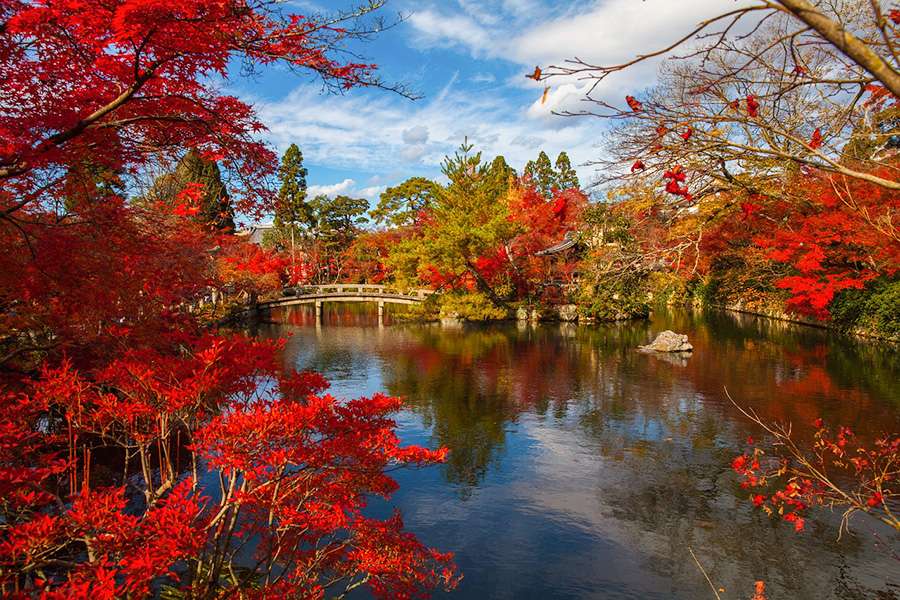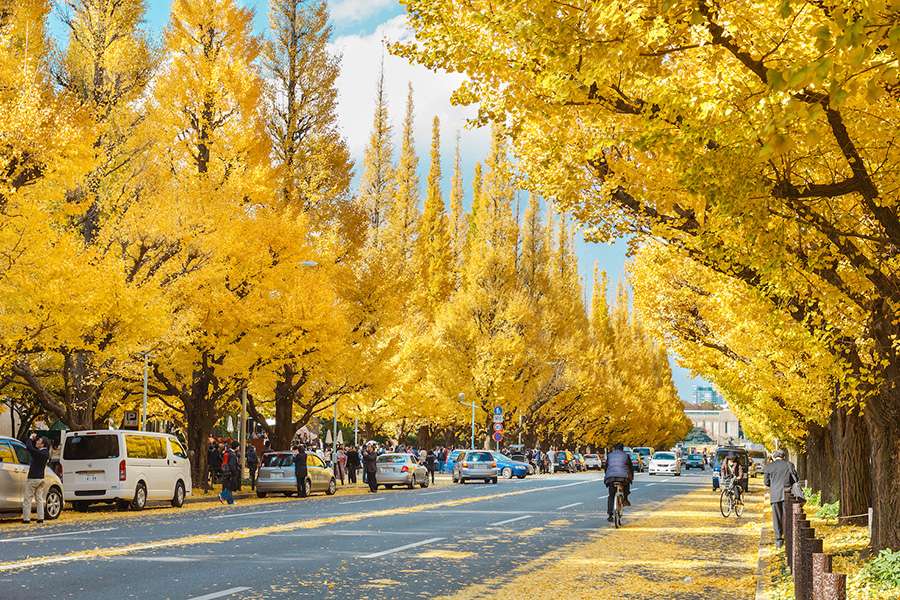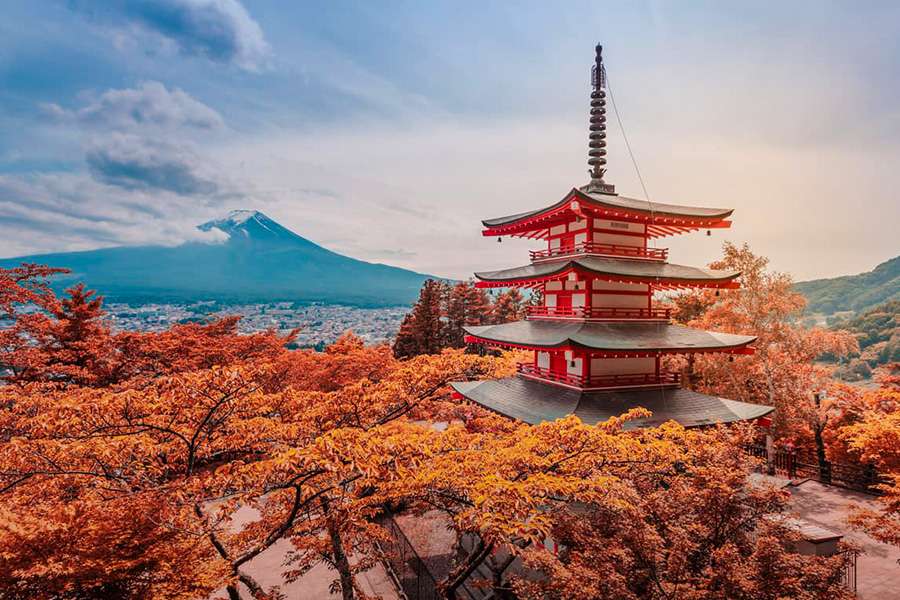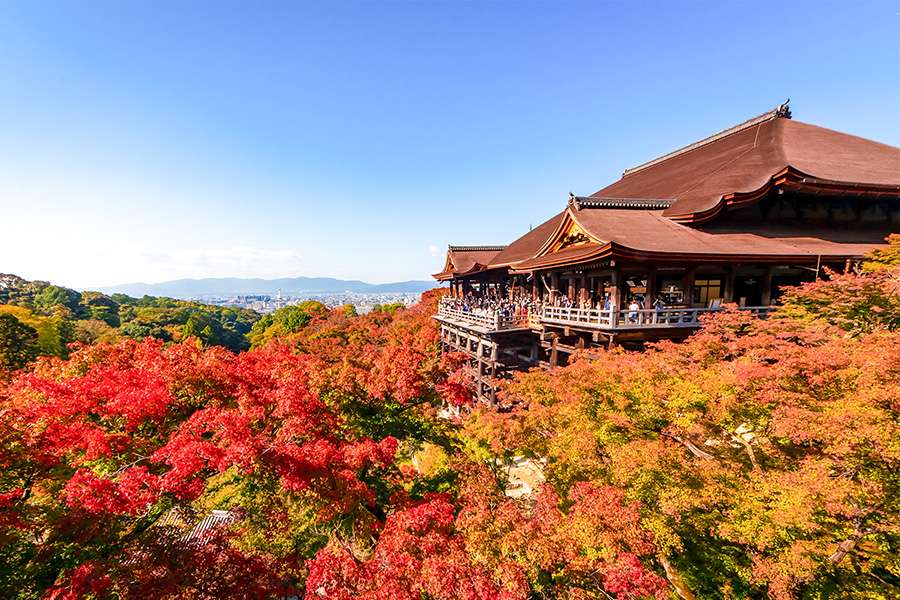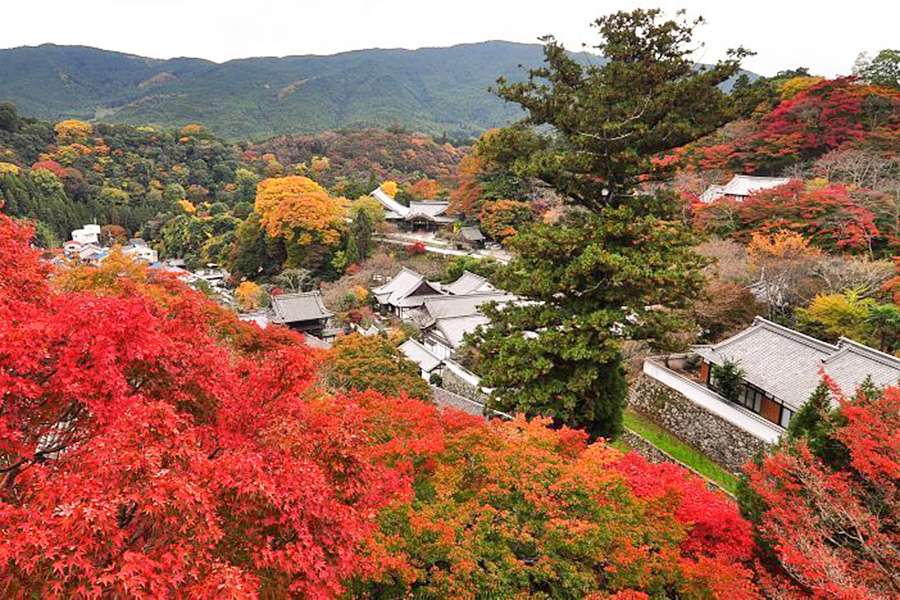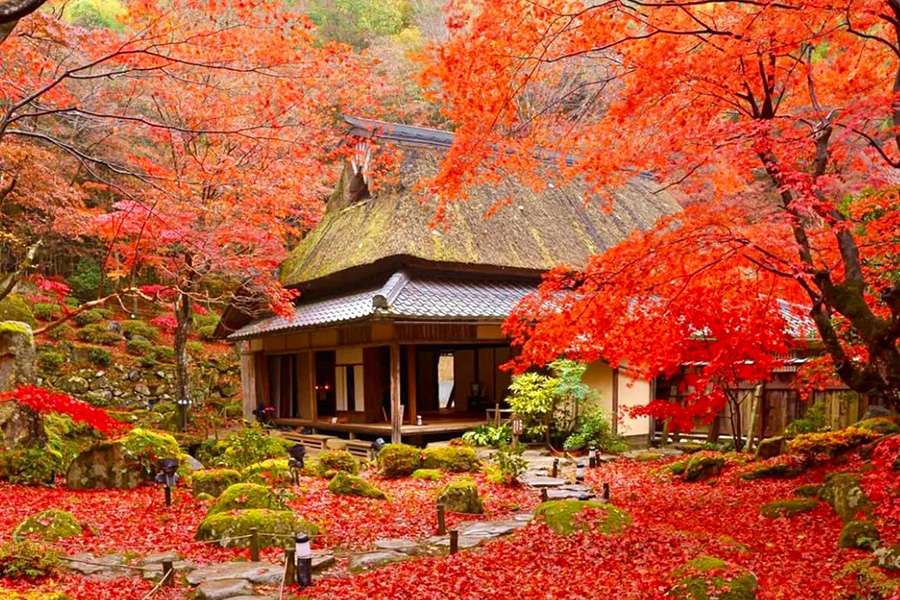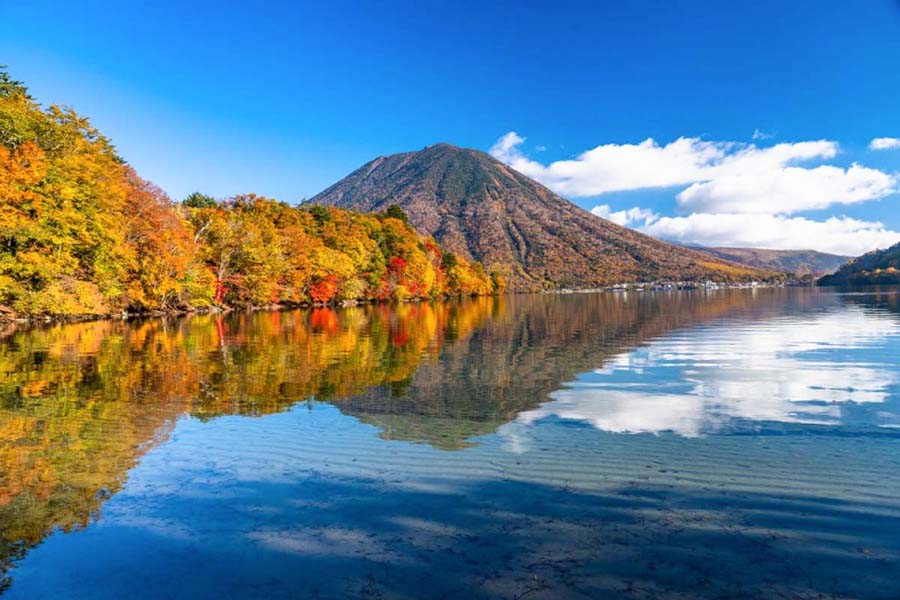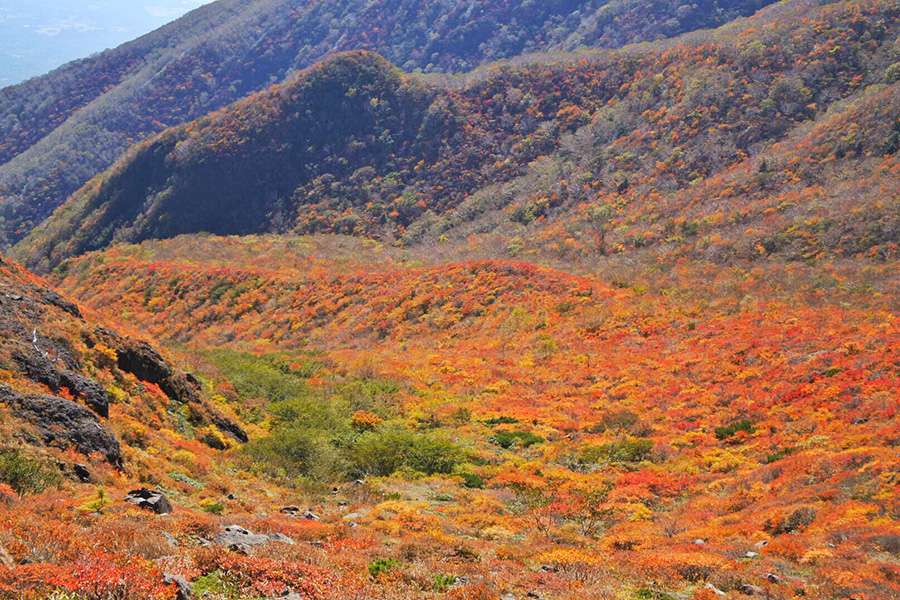Fall is an exceptional time to visit Japan. In many ways, Japan in autumn foliage outshines spring's cherry blossoms with its stunning seasonal display. The transformation of Japan’s landscape into a vibrant tapestry of colors is a must-see experience. When does autumn occur, and where can you find the best views of Japan’s autumn foliage? This comprehensive guide will help you plan an unforgettable Japan vacation.
Autumn in Japan, known as Aki, showcases two key types of fall foliage: Koyo and Momiji. Koyo refers to the general autumn colors of red and yellow leaves, while Momiji specifically highlights the intensely red maple leaves that are particularly breathtaking during this season. The maple leaf is a prominent symbol of fall in Japanese culture, and the term Momijigari, meaning "hunting red leaves," reflects the hexcitement of many visitors who flock to Japan to witness the vibrant autumn leaves.
When is Fall Foliage in Japan?
The fall season in Japan spans from mid-September to early December. Temperatures during this period range from about 45°F (7°C) in late autumn evenings to 75°F (24°C) on warm September days. In Hokkaido, the earliest fall colors can be seen from mid-September to early October, while the Tohoku region's foliage peaks around mid-October. Tokyo and Kyoto typically experience the best views from mid-October to early December, and Kyushu's fall colors are most vibrant toward the end of November.
Unlike the unpredictable cherry blossoms, autumn in Japan offers a more extended and predictable period for enjoying fall colors. This allows for easier planning around the vibrant autumn scenery. Here are the general timeframes to experience Japan’s autumn foliage.
| DESTINATION | YELLOW LEAVES | RED LEAVES |
|---|---|---|
| Daisetsuzan | September 15 | September 25 |
| Hachimantai | October 5 | October 15 |
| Mt. Hakkoda | October 15 | October 25 |
| Kurobe Gorge | October 25 | November 5 |
| Kakunodate | October 15 | October 25 |
| Nikko | October 25 | November 5 |
| Tokyo | November 25 | December 5 |
| Takayama | October 25 | November 5 |
| Fuji Five Lakes | October 25 | November 5 |
| Kanazawa | November 15 | November 25 |
| Kyoto | November 25 | November 25 |
| Setouchi | November 25 | November 25 |
| Shikoku | November 25 | December 5 |
| San'in | November 25 | November 25 |
| Kyushu | November 25 | December 5 |
Best Locations to See Autumn Leaves in Japan
Tokyo
Autumn in Tokyo is truly stunning. Known globally as a vibrant metropolis with abundant green spaces, Tokyo offers some exceptional spots to experience the fall colors. Highlights include:
- Jingu Gaien Ginkgo Avenue: A renowned street lined with ginkgo trees that turn a brilliant yellow in autumn.
- Koishikawa Korakuen: A well-loved garden near Tokyo Dome, featuring numerous maple trees.
- Mount Takao: Situated on the city's outskirts, this popular weekend destination is perfect for an autumn hike.
- Oze National Park: A favored hiking location about 100 kilometers north of Tokyo.
- Rikugien Garden: A stunning landscape garden renowned for its red leaves and cherry blossoms.
- Shinjuku Gyoen: A spacious city park ideal for autumn picnics.
- Ueno Park: A large green area with over 9,000 trees displaying impressive fall colors.
- Yoyogi Park: Near the trendy Harajuku area, offering a blend of ginkgo and maple trees with vibrant autumn hues.
Mt. Fuji
As a quintessential symbol of Japan, Mount Fuji is a must-see for many travelers. Although winter is often considered the best time to view the snow-capped peak, autumn offers its own unique charm with vibrant colors. From early October to late November, the area around Mount Fuji and Lake Kawaguchiko is perfect for experiencing autumn foliage. The elevation of over 800 meters at the base of Mount Fuji causes significant temperature variations between day and night during fall, enhancing the brilliance of the autumn leaves.
Some of the most enchanting spots include:
- Oishi Park: Renowned for its kochia plants that turn a striking red in autumn.
- Momiji Tunnel: Provides a picturesque view of Mount Fuji framed by maple trees.
- Kubota Itchiku Art Museum: Features beautiful silk kimono works by Kubota Itchiku and boasts a stunning garden with seasonal displays.
- Maple Corridor: A scenic, tree-lined path along the northern shore of Lake Kawaguchi.
- Mt. Fuji Panoramic Ropeway: Offers not only transportation but also spectacular views of Lake Kawaguchi, Mount Fuji, and the surrounding autumn landscape from the top of Mount Tenjo.
Kyoto to Kasuga Shinto Shrine
Kyoto, renowned as a fall foliage paradise in Japan, enchants visitors with its rich array of Buddhist temples, shrines, Japanese gardens, tea houses, mountains, ponds, and garden bridges. During autumn, the city offers breathtaking vistas of vibrant yellow leaves that create a romantic atmosphere.
Some of the top spots for autumn leaf viewing in Kyoto include:
- Kiyomizu-dera: One of Kyoto’s most iconic temples, known for its spectacular illuminated fall foliage and over 1200 years of history.
- Daigo-Ji Gardens: A spacious green area favored by photographers for its autumn scenery.
- Daitoku-Ji: Features an impressive maple tree tunnel at its entrance.
- Eikando Temple: Renowned for its beautifully lit trees during the fall season.
- Kinkaku-Ji: The gold-leafed temple perfectly contrasts with the colorful autumn leaves surrounding it.
- Todai-ji Temple: Offers a mesmerizing display of autumn foliage, along with views of deer and maple trees.
- Nanzen-Ji: Gained fame from the film Lost in Translation, which featured scenes of this temple in the fall.
- Tenryu-Ji: A UNESCO World Heritage Site known for its stunning landscape garden.
- Tofuku-ji Temple: Home to the Tsutenkyo Bridge, one of the city’s most popular spots for leaf viewing.
Hidden Gems for Enjoying Japan's Fall Foliage Without the Crowds
As Japan's fall foliage season begins in mid-September and lasts through nearly three months, from Hokkaido in the north to Kyushu in the south, finding quieter spots can enhance your experience. These lesser-known locations offer a more serene atmosphere compared to the popular, heavily visited spots. Here are five of the best off-the-beaten-path places to appreciate Japan’s autumn maple leaves.
Kamakura Hasedera
Best Viewing Period: Early November to early December
Kamakura Hasedera boasts a classic Japanese-style garden with a dry landscape, set against a stunning backdrop of mountains and the sea. The temple houses an eleven-faced Kannon statue, the largest wooden Buddha in Japan. During Japan’s autumn leaf festival, the temple is beautifully illuminated from 5:00 PM, creating a serene and enchanting scene where the historic charm of the temple blends with the vibrant red leaves, evoking a sense of timeless beauty in the quiet of the ancient capital.
Lake Ashi, Hakone
Best Viewing Period: Early November to the end of November
Lake Ashi, a volcanic lake formed around 3,000 years ago on Mt. Hakone, is an excellent spot for experiencing autumn in Japan. Its popularity stems from the stunning views of the red foliage on Mount Fuji or Mount Gekurayama visible from Hakone Park along the lake’s shore. For a unique experience, you can take a cruise on a pirate ship modeled after a 17th-century European battleship, offering panoramic views of Hakone’s autumn colors and a magical journey across the tranquil lake.
Mount Hiei
Best Viewing Period: Late October to late November
Mount Hiei stretches across both Shiga Prefecture and Kyoto Prefecture, offering stunning vistas. To the east, you’ll see Lake Biwa, Japan's largest lake, and to the west, the ancient city of Kyoto. From the summit of Mount Hiei, you can enjoy panoramic views of the picturesque landscape below. The "Yumemigaoka" observation deck along the tourist route provides a spectacular view of Lake Biwa framed by vibrant red autumn foliage during the maple season.
Lake Chuzenji, Nikko
Best Viewing Period: Late October to the end of November
Lake Chuzenji, situated on a high plateau over 1,200 meters above sea level in the southwest of Nikko City, is one of Japan's premier alpine lakes. During the fall, Chūzen-ji Temple will be adorned with vibrant reddish-yellow hues. Strolling around the lake offers stunning views of the colorful autumn landscape, with the red mountains reflecting in the lake’s surface. In the nearby Senjōgahara Grassy Plain, the vegetation gradually shifts to yellow and orange by late September, complementing the distant Mt. Nantai and creating a breathtaking autumn panorama.
Mt. Chausu, Nasu
Best Viewing Period: Mid-October to Mid-November
Nasu, renowned as a "royal retreat," offers stunning natural beauty, with Mt. Chausu being the prominent peak of the Nasu Mountains. It provides an excellent, serene setting to view the autumn foliage. The Japanese maple season here begins more than a month earlier than in Kyoto. As you ascend the mountain by cable car, you'll have a bird’s-eye view of the vibrant forests below, resembling an artist’s palette. For those who prefer a more immersive experience, walking down the mountain after reaching the summit rewards you with picturesque autumn scenes near the base.
Choose your favorite secluded spots to quietly enjoy the Koyo season and immerse yourself in the unique beauty and ambiance of Japan's fall colors.
Planning Your Trip for Japan's Fall Foliage
With Japan’s autumn foliage season being a top attraction, planning your trip in advance is advisable. Major destinations for Japan’s autumn leaves can fill up quickly, so early booking wtih Japan Shore Excursions is recommended.

